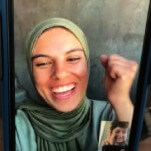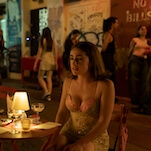Off and on for a few years in the early ’90s, director André Gregory gathered with his old My Dinner With André co-star Wallace Shawn and a handful of New York actors to rehearse Anton Chekhov’s Uncle Vanya in a crumbling theater. They came together for the community of it, and for the exercise, and though they invited friends to come watch, they never performed for more than a few dozen people. As a way of preserving the project—and saying goodbye—Gregory and Shawn invited their My Dinner With André director Louis Malle to film it. They chose to record their Vanya in a way that captured its particular power. The actors wore street clothes and performed in a mostly bare space, while Malle filmed a docu-realistic (though carefully staged) opening sequence in which the cast arrives at the theater and mills about before easing into the play. A marvelous convergence occurred: Chekhov’s depiction of an estate in decline wound up resonating with the location of the performance, and the valedictory turns of the actors. Then, as if on cue, to add a melancholy undertone, Malle died a little over a year after his Vanya On 42nd Street premiered. It would be his final film.
Vanya On 42nd Street was well-reviewed when it came out in 1994, but it’s even better now, for a number of reasons. For one, in spite of the varying age and experience of the cast, each was at the peak of his or her respective powers: the young Brooke Smith and Julianne Moore, the middle-aged Larry Pine and Wallace Shawn, and the elderly George Gaynes, Lynn Cohen, and Phoebe Brand. All had careers bouncing between theater, film, and television, but after years of playing and re-playing Chekov’s story of a vain professor, his young wife, and the family whose lives they upend over the course of a few months in the country, they succeeded in erasing the line between actor and character. And there’s a lot that Vanya On 42nd Street captures that means more now than it did in ’94, such as the introductory shots of the sleazy, pre-Disneyfied Times Square—a neighborhood that was transformed in part when Disney bought and restored the New Amsterdam Theater, where this movie was shot.
Also inadvertently special? The look of Vanya On 42nd Street, which was shot on film instead of video, as it likely would be today. Modern digital cameras are capable of achieving the intimacy and luminescence that Malle and cinematographer Declan Quinn brought to Vanya, but the effort Malle and Quinn put in makes a difference. Just knowing how often the crew would’ve had to stop and reload the film makes the lived-in quality of these performances all the more remarkable. The movie feels like two hours of theater captured in real time, not something shot over the course of weeks.
The unsung hero of this whole experience is David Mamet, who provided a very lean and natural-sounding Chekhov translation, honoring the elemental qualities of its plot and characters without trying to make it “relevant” or “modern” per se. The unfussiness of Mamet’s script—like the sparseness of the decor and costuming—allows the actors to work pure, weaving a spell with subtle gestures, postures, and inflections as much as with their words. That makes it all the more poignant when Pine as Dr. Astrov pores over his historical maps, or when Smith as the lovelorn Sonya tells Shawn’s Vanya that someday they’ll reflect on this wretched time of their lives with tenderness and nostalgia. Everything is so basic that the actors aren’t just speaking for the characters, but for themselves—and for the audiences still to come.
Key features: A new half-hour documentary that looks back, with appropriate wistfulness, on the whole process.









































